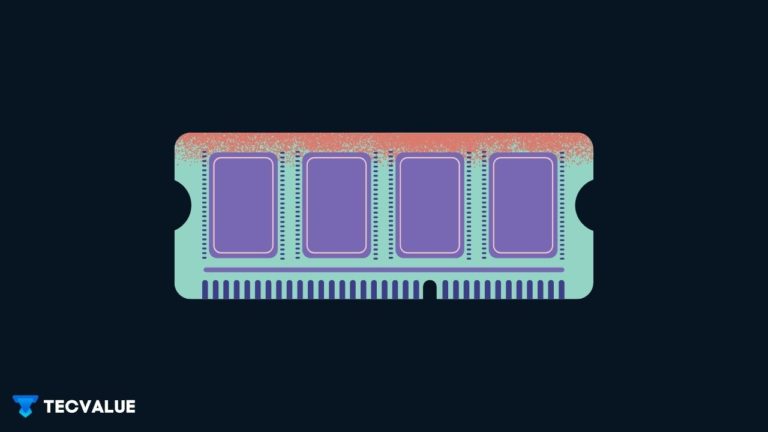
PC and its components are ever-evolving to meet modern-day standards and well over exceed them. With the dawn of the crypto age and artificial intelligence, the demand for high spec PC peripherals is evergrowing with it is seeing no ceiling so far.
In this article we’ll go over the history of Double Data Rate Synchronous Dynamic Random Access Memory or DDR SDRAM as the new Corsair Dominator Platinum RGB DDR5 ram is just announced, making a milestone in the history of its memory clock speeds. We will also cover the differences between current-gen DDR4 vs DDR5.
But first, let’s quickly glance over the latest addition to the arsenal of high-speed RAMS:
Corsair Dominator Platinum RGB DDR5 RAM
Corsair’s initial release of Dominator Platinum RGB DDR5 RAM was not capable of exceeding the 6,000 MT/s data transfer rate limit. However, its recently released kits, DDR5-6200 and DDR5-6400 breakthrough the limits and peak at a clock speed of 6,400 MT/s data transfer rate.

Trivia: MT/s and Mhz are the same thing. They are both metrics for data transfer speed. 3200 Mhz equates the same as 3200 MT/s. The only difference is that Mhz is commonly used when listing it for sale while MT/s is used in official papers or when a product is launched.
Price
These kits are available on the Corsair website for around $514.99 for the 6200 variant and $559.99 for the 6400 variant.
Overclocking Your RAM
They come as a kit of dual-channel 16×2 GB memory with XMP 3.0 features enabled. This means that users can automatically overclock their RAM kits from the UEFI/BIOS through inbuilt overclocking profiles.

However, you will be happy to know that you can also overclock your corsair RAM through the iCUE software which Corsair has recently revamped to support XMP management and editing.
RAM Timings and Voltage
The 6,200 MT/s kit will be running at CL36-39-39-76 RAM timings powered at 1.30V while the 6,400 MT/s kit will be running at CL38-40-40-84 RAM timings powered at 1.35V.
You Might Also Like | Mediatek Vs Qualcomm
These new releases are a considerable upgrade from their predecessor, Corsair Dominator 5600 MT/s. The new Dominator DDR5-6400 module now sits at the upper limit of the modern JEDEC standard range.
Warranty Information
These memory modules are backed with a Corsair Standard Lifetime warranty. However, it’s still wise to not fiddle with them without proper knowledge of overclocking.
Now that DDR5 RAM is well establishing itself and slowly growing into the new norm of computer memory, questions may arise whether DDR4 is obsolete or irrelevant in the new age.
To know if DDR5 is the DDR4-killer, we must analyze their differences closely and how it will affect the common consumer i.e you, who is the target audience for these RAM. Let’s get into it:
Difference between DDR4 and DDR5 RAM
Let’s look at all the differences between DDR4 and DDR5 and how they may affect you.
Data Transfer Speed
- DDR4 RAM is avaialble at data transfer speeds ranging from 1600 Mhz to 3200 Mhz [MT/s]. In some cases, for instance, Corsair Vengance RAM, it can be overclocked to reach 4800 Mhz [Mt/s].
- DDR5 RAM is picks up where DDR4 peaks. It is available at data transfer speeds ranging from 4800 Mhz to 8400 Mhz[ MT/s ] witht he upper limit steadily increasing as the techonology matures.
Capacity Difference
Depending on the RAM’s capacity, each stick of RAM (also known as a DIMM) is made up of a number of individual integrated circuit(IC) modules.
You Might Also Like | Adreno VS Mali
DDR4 has a maximum module density of 16GB, whereas DDR5 quadruples it to 64GB. As a result, DDR5 RAM sticks have a significantly larger total capacity when compared to DDR4 RAM sticks.
DDR5 sticks with capacities more than 64GB will scale as the demand for memory grows in the industry which we expect is not stopping any soon given the deployment of new resource-heavy technologies such as Web3.0, Cloud and so on.
Power Management
The power management in DDR4 RAM is handled by the motherboard. However, its not the same for DDR5 Memory.
In DDR5 RAM, there is a Power Management Integrated Circuit (PMIC) built right into the RAM itself. It is responsible for all sorts of power management related functions.
DDR5 also runs at a lower voltage compared to DDR4. It is more noticeable in smaller devices where power management is crucial.
Availability Compatibility and Pricing
DDR5 is rarely available as compared to its more mature predecessor, DDR4. Moreover, DDR5 is STRICTLY compatible with Intel’s “Alder Lake” 12th Gen CPUs ranging from i5-12600K to i9-12600K and their KF counterparts alike.
These CPUs also support DDR4. However, its important to take note that although these CPUs support DDR4 RAM, the motherboard needed to mount these CPUs DO NOT support both DDR4 and DDR5 RAM. So, either you have to settle for a DDR5 compatible version of the motherboard or a DDR4 compatible version.
Talking about the pricing, there is a very significant difference between purchasing a DDR5 Compatible motherboard and a DDR4 compatible motherboard.
Similarly, the price difference between DDR5 and DDR4 RAM is also significant. There is a huge gap between their starter market prices.
So, Should You buy DDR5 RAM?
Well, early adoption of a budding technology is completely your conscious choice. If you have the funds and are lucky enough to get hold of stock, you can go for it without any hesitation.
However, when it comes to Do you need to buy or upgrade to DDR5 RAM?
The answer is a simple no because DDR4 is simply enough for the uses of the average consumer. If you have some special plans which require the efficiency and density of DDR5 then that’s a different story altogether.